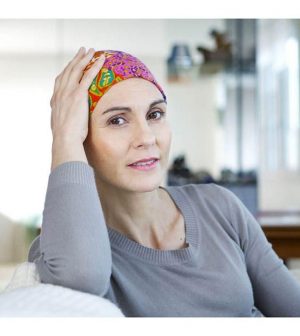- Epsom Salts: Health Benefits and Uses
- See What Saffron Can Do for Sleep and Heart Health
- 6 Common Mistakes to Avoid Before Your Physical
- Can Sweating Really Help You Beat a Cold?
- Strengthening Your Relationship: Practical Strategies
- Skip Storing This Everyday Product in the Fridge Door
- Green Tea + B3 Pairing May Boost Brain Health
- Navigating Your Midlife Crisis: Embracing New Possibilities
- City Raccoons Showing Signs of Domestication
- Mapping the Exposome: Science Broadens Focus to Environmental Disease Triggers
Only 1 in 7 Cancers Are Caught Through Cancer Screenings

Just 14% of all cancers diagnosed in the United States are detected through routine screening, a new analysis finds — pointing to many missed opportunities to catch cancer early.
“It’s surprising, but true,” said Caroline Pearson, senior vice president of the research institution NORC at the University of Chicago, which conducted the review.
Cancer screening, by definition, refers to tests that can detect tumors before they cause symptoms — giving people the best chance of early treatment and beating the disease. Right now, there are routine screening tests recommended for breast, cervical and colon cancers. Lung cancer screening, meanwhile, is recommended for some smokers and former smokers.
One major reason for the findings is that for most cancers, there are no routine screening tests available. But there are also missed opportunities with the existing ones, according to Pearson.
“For one, screening isn’t perfect,” she said, so there will always be some early cancers that are missed.
In addition, Pearson said, some cancers will develop in the intervals between screening tests. Mammography screening, for example, is typically done every one or two years, while colonoscopy — one of the screening tests for colon cancer — is recommended every 10 years for people at average risk.
But there’s also a third reason, Pearson said: Many Americans do not get the recommended cancer screenings.
“Look at something like colorectal cancer, where we have lots of screening options,” Pearson said.
Besides a traditional colonoscopy, there is “virtual” CT colonoscopy, as well as various stool-based tests. A recent report from the U.S. Centers for Disease Control and Prevention found that 69% of Americans ages 50 to 79 said they were up-to-date with colon cancer screening in 2020.
But that percentage varied widely state to state — going as low as 58% in California — and 22% of Americans in the age range for colon cancer screening said they’d never been screened.
Other screen-detectable cancers have similar room for improvement. The CDC says that in 2019, 69% of U.S. women age 40 and older had a mammogram in the past two years, for example.
Getting those rates up, Pearson said, is the most straightforward way to boost the number of cancers detected by screening.
But there’s also a need for better screening tests, including methods that are more accessible and less burdensome, according to Pearson.
Researchers are, in fact, working on that. A major goal is to develop a single blood test that can detect multiple cancers, according to Dr. Ned Sharpless, former director of the U.S. National Cancer Institute.
“While not market-ready, this concept is currently in development,” Sharpless said.
“These simple tests could detect evidence of cancer in blood or other bodily fluids so that the disease can be treated very early, before it spreads,” he said.
If such a blood test pans out, Sharpless said, “it could have a tremendous impact on cancer mortality rates.”
The NORC analysis, which is not published in a peer-reviewed journal, used various data sources to estimate the percent of cancers detected by screening in 2017.
Overall, that figure was 14%. In part, that was because so many cancers lack a screening test: 57% of all cancers diagnosed in 2017 were types that have no routine screening method.
However, 15% of all cancers diagnosed that year were screenable, but were not detected that way. In those cases, the disease is typically caught because symptoms have developed — which may also mean the cancer is more advanced and tougher to treat.
The percent of cancers detected by screening does vary according to type, the analysis found. Of all breast cancers diagnosed in 2017, 61% were caught by screening. That figure was 52% for cervical cancer, 45% for colon cancer, and just 3% for lung cancer.
That low number, Pearson noted, could be because lung cancer screening is recommended only for certain high-risk people. It’s also newer than screening tests for other cancers, and studies show that few eligible Americans are receiving it at this point.
For the general public, Pearson said, the most important thing is to get the cancer screenings that do exist.
“Talk to your primary care provider and know which screenings are recommended for you,” she said. “Awareness and education can go a long way.”
More information
Visit the U.S. National Cancer Institute for more on cancer screening.
SOURCES: Caroline Pearson, senior vice president, NORC, University of Chicago; Ned Sharpless, MD, former director, U.S. National Cancer Institute, Bethesda, Md.; NORC analysis, Dec. 14, 2022, online
Source: HealthDay
Copyright © 2025 HealthDay. All rights reserved.










